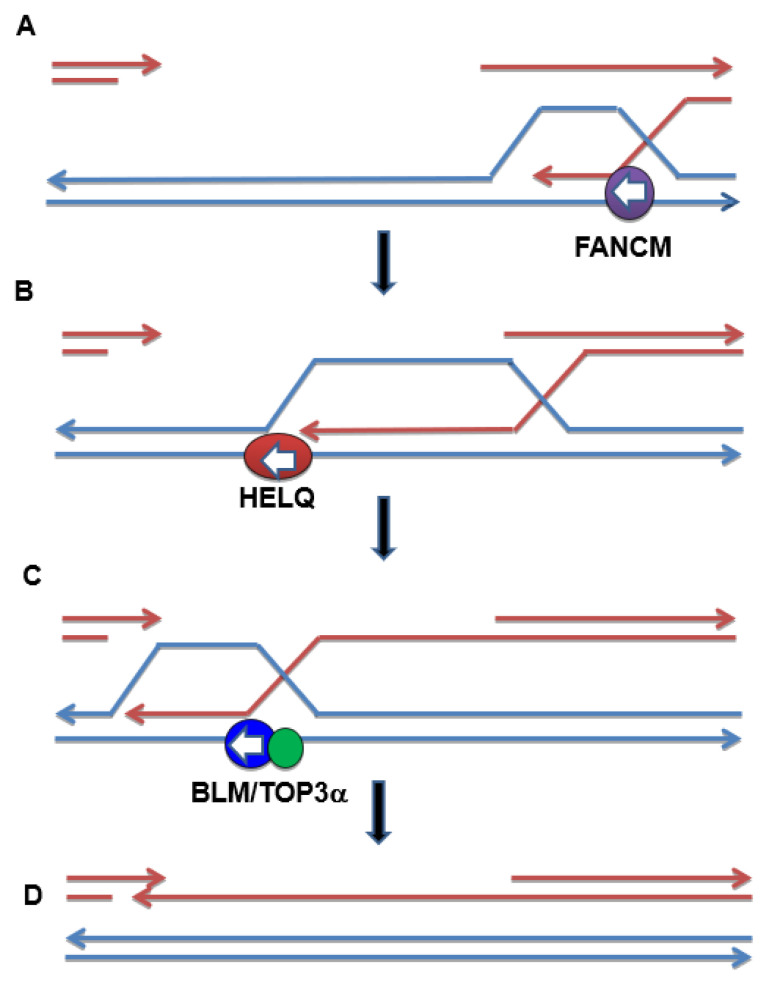Figure 6.
Model for the roles of the HELQ, BLM, and FANCM helicases during SDSA repair. (A) FANCM unwinds unproductive D-loops at the beginning of SDSA prior to the transition to processive repair synthesis. In its absence, the D-loop is processed in a way that does not predispose it to flanking deletions (not shown). (B) HELQ promotes enlargement of the D-loop and repairs synthesis. (C) As SDSA progresses, BLM-TOP3α is needed to dissociate the D-loop. In the absence of BLM, structure-specific endonucleases cleave DNA flanking the D-loop, leading to deletions (not shown). (D) Following D-loop dissociation, complementary ssDNA anneals and SDSA is terminated through gap filling and ligation (not shown). Arrows indicate 3′ ends of DNA. White arrowheads indicate the direction of helicase unwinding. Although only strand invasion from the right side of the gap is shown for simplicity, gap repair likely proceeds from both directions.

